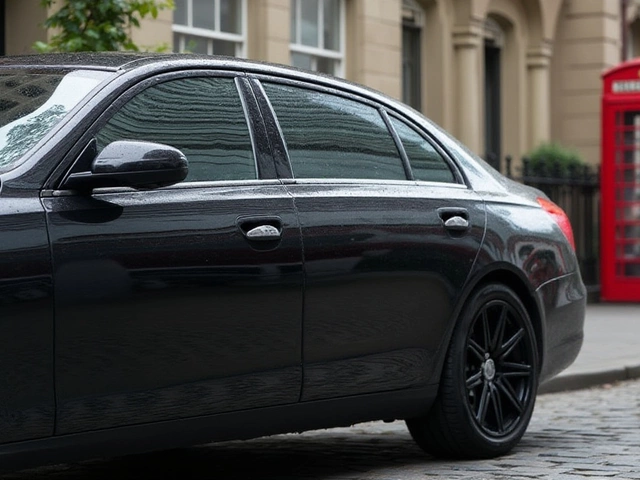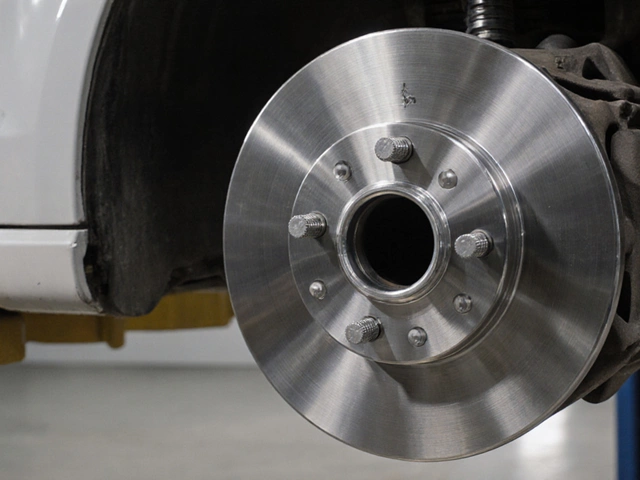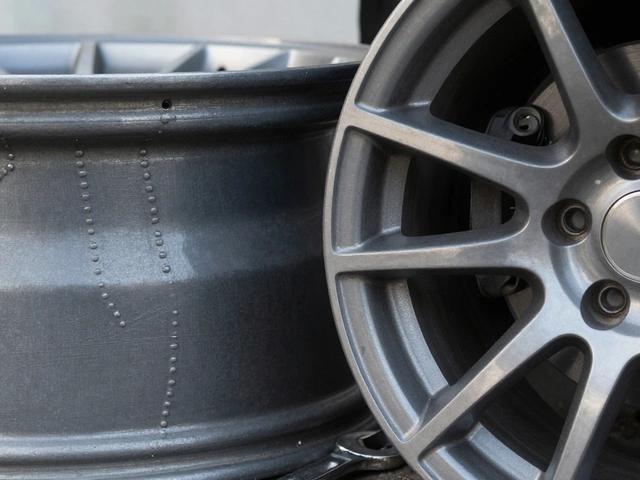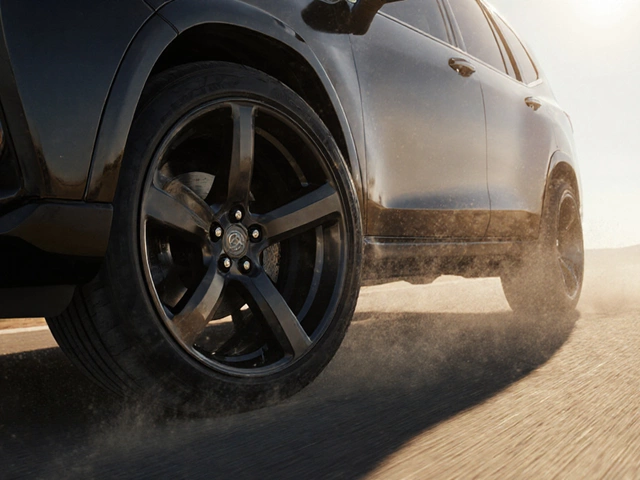You slide those shiny wheel spacers onto your ride and step back, already picturing the boost in stance and swagger. But right before you hop in for a test drive, that nagging question creeps in: do I actually need a wheel alignment now? This isn't just a detail for perfectionists; we're talking about how your car behaves at 60 mph on the highway or makes that sharp turn in the rain. Messing around with your wheels can change more than just the curb appeal—sometimes it shifts the whole balance of how your car tracks, steers, and wears out its tires. Turns out, this isn't just a debate for car forums. There’s both science and real-world experience behind the best move to keep your vehicle running straight and true. If you think skipping alignment could save you time or cash, you might want to look at the long game—sometimes the hidden costs only show up at the worst possible moment.
What Wheel Spacers Actually Do to Your Vehicle
Most people bolt on wheel spacers for looks, making their car's stance wider and turning heads wherever they park. But this hardware does more than push your wheels out for a meaner profile. By physically moving the wheel further from the hub, spacers change the geometry of your suspension—even if it's by just a few millimeters. Let’s break down what that means in the real world.
First, when you install wheel spacers, you’re modifying the track width—basically, how far apart your wheels sit on each axle. Add 20mm spacers, and that’s 20mm extra on each side. This might not sound like much, but those few millimeters can affect cornering, high-speed stability, and the loads your bearings and suspension parts have to handle. And if you play with offsets or go extra wide, the leverage against all those components increases. There’s also the change in scrub radius—the measurement of how the steering axis intersects the ground relative to the tire’s center. Messing with this can subtly tweak the feel of your steering, sometimes making it heavier or lighter, or making the car wander a bit at speed.
It doesn't stop there. Wheel spacers can solve clearance problems, especially with aftermarket brakes, but they also move the wheel assembly further away from the hub. That means the alignment specs you set before might not match up exactly with the geometry you have now. For most daily drivers, thin spacers (let’s say, up to 5mm) might not make a massive difference. Get into the 15mm–25mm range or bolt on wider, and you may start to notice differences—not just in looks, but in how the car drives, brakes, and eats up tires.
Here’s a data table with some key figures that you might find useful if you want the scoop on how far spacers can change things up:
| Spacer Thickness (mm) | Effect on Track Width (per axle, mm) | Potential Impact on Alignment | Risk to Bearings/Suspension |
|---|---|---|---|
| 3–5 | 6–10 | Minimal | Negligible |
| 10–15 | 20–30 | Noticeable | Low–Moderate |
| 20–25 | 40–50 | Significant | Moderate–High |
That table comes straight from industry-standard alignment guides and shows why the thickness matters. Keep in mind, not all cars react the same—your cousin’s Civic might shrug off 15mm spacers, but a heavy-duty pickup or a sports car with tight tolerances could start chewing up front-end parts or wearing tires unevenly. Something as simple as a slight shift in how the suspension loads the tire can end up pulling alignment numbers out of factory spec, even if they still look straight to the naked eye. And it gets extra interesting when you add in factors like uneven tire wear, odd vibrations, or changes in steering effort.It’s not just science—it’s how it feels on the road, too. Plenty of folks have installed spacers and noticed the car pulling to one side on highways or the wheel not returning to center quite the same. All these changes can pile up, especially if you stack other mods like coilovers or bigger wheels.

The Real Deal: Do You Really Need an Alignment After Wheel Spacers?
This is where opinions get spicy. Some people say, "You only need an alignment if you lower the car or mess with suspension arms," while others rush to the alignment shop after even the thinnest spacers. So what’s the answer? Here’s what actually happens and why you should care even if your alignment seems fine by eye.
When you bolt on wheel spacers, you shift the way the tire sits in the wheel well. Even if you’re careful and install everything by the book, changing the offset (which spacers do) can subtly pull alignment angles like toe, camber, and caster a bit off target. If your car was already a touch out of alignment, that shift gets exaggerated. The most important wheel alignment angle affected is toe—the direction each wheel is pointed relative to the car’s centerline. If toe gets altered even a little, your steering feel changes, the car might drift on straight roads, and your tires can start to feather or wear unevenly. That could mean brand new, expensive rubber gets chewed up long before its time.
Let’s talk camber—the tilt of your wheel from vertical viewed from the front of the car. Spacers shift the wheel further out, which can influence negative camber. Too much negative camber gives you that squatted look but also wears the inside edge of the tire way too fast. And caster angle, which affects stability and steering return, usually isn’t a direct casualty of spacers but can get thrown off if combined with other mods.
Modern cars are built tighter than ever, especially with adaptive safety features relying on everything staying in line. One study from a major alignment equipment maker in 2022 noted that even a 2-degree toe misalignment per wheel could cut tire life by up to 20%. And that’s the sort of change you might get if you add wide spacers and skip the alignment. Another thing most folks don’t consider: factory tolerances aren’t always laser sharp, and some cars leave the assembly line slightly out of spec. So adding spacers can take you from “close enough” to “outside the safety zone” faster than you might expect.
If you’re running super-thin spacers—say, 3–5mm—and your tires weren’t wearing weird before, maybe you’re fine, as long as you double-check everything. But if you pop on anything thicker—or you’re already chasing down a weird vibration or your wheel doesn’t center after a turn—it’s smart to get a fresh alignment. Even more so if you rely on your car as a daily, commute long distances, or drive in sporty conditions (where any little misalignment can add up to quicker tire wear and sketchy handling).
- If your steering wheel is off-center after spacer install, that’s a red flag.
- Tires start making new noises or wearing unevenly? Get an alignment check.
- You combined spacers with lowering springs, new shocks, or changed out control arms? Definitely do an alignment.
- Your truck’s alignment was already suspicious? Don’t gamble—get it checked.
Let’s put it this way: wheel spacers by themselves don’t always force a full alignment, but they stack the odds. Think of it as cheap insurance for your suspension, tire life, and peace of mind. Out of pocket, a four-wheel alignment at a decent shop runs $100–$150. That’s usually less than the cost of one decent tire. And a good shop will give you a printout showing before-and-after specs—no more guessing if things are dialed in or way off.

Best Practices for Installing Wheel Spacers the Smart Way
Not all spacers are created equal. Some cheap, non-hubcentric ones can cause vibrations even before you think about alignment. Go with high-quality, hubcentric spacers made for your vehicle—they help prevent vibration and stress by ensuring your wheel’s weight gets distributed correctly. Before bolting them on, clean the hub face and the wheel thoroughly; any rust or dirt trapped between the faces can screw up fitment and make issues worse down the road.
Torque matters. Always use a torque wrench for the spacers and wheel nuts and follow the manufacturer’s settings. Over-tighten and risk damaging studs; under-tighten and you could end up chasing wobbles or worse—a wheel coming loose. After installing the spacers, always re-torque the wheels after a short drive—say 50–100 miles. Even the pros sometimes forget, and lots of “almost catastrophic” horror stories start this way. Double check for clearance on brake lines and fender lips, especially if you went wider than stock. A little rub now can become expensive damage or a tire blowout later.
If you’re doing bigger changes—like combining spacers with aftermarket wheels or tire sizes, or you’re lowering the car at the same time—just go straight to the alignment shop. Tell them what you changed. A good tech will dial in specs that keep the car handling stable and prevent your tires from getting chewed up before their time. Snap a photo of your alignment printout and stick it in your glovebox; it can help diagnose issues later if something starts to feel off.
- Stick to reputable spacer brands. Cheap ones often cut corners.
- Consider wheel bearings. Pushing the load out board wears them faster.
- Watch for steering changes after install. Anything odd? Time for an alignment check.
- Keep an eye on tire pressures. Spacers don’t directly affect them, but if your suspension loading changes, monitoring pressures keeps your ride safe.
The topic of spacers and alignment is one of those "small mods, big impact" scenarios. It looks simple on the surface, but it can have surprises waiting if you skip the little details. The easiest thing you can do? Pay attention to how your car feels right after installing spacers. Take mental notes—does it track like before, does the wheel feel different, are there new sounds or weird tire wear?
Gut check: when something feels off, never just shrug and hope it goes away. Pay the shop to check it over—it’s cheaper than burning through tires or suspension parts. When you get your alignment checked after spacers, you’re not just covering your bases; you’re also making sure your car handles as sharp as it looks with those wider wheels. That’s what keeps your ride fun, safe, and ready for the next set of mods.






